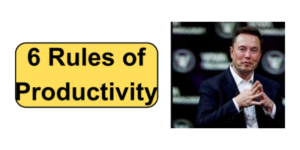The macroenvironment encompasses a wide array of external forces that influence business operations. These include political, economic, social, technological, legal, and environmental (PESTLE) factors, which collectively shape the environment in which organisations operate. Understanding these forces is vital for businesses as they not only affect decision-making processes but also determine the long-term viability of an organisation. The use of analytical tools like the PESTLE framework enables businesses to systematically monitor and forecast external influences, allowing for proactive responses to emerging trends and challenges (Johnson, Scholes, & Whittington, 2017).
1.0 Political Factors
Political and legal considerations form a significant part of the macroenvironment, as regulatory changes and governmental policies can have direct implications on business practices. For instance, shifts in trade policies, tax regulations, and labour laws affect how businesses operate domestically and internationally. Political instability in a region can disrupt supply chains, deter investment, and hinder market entry (Worthington & Britton, 2015). Brexit, for example, has had a profound effect on businesses operating within the United Kingdom and European Union, creating uncertainty around trade agreements, immigration policies, and legal regulations.
2.0 Economic Factors
Economic factors in the macroenvironment, such as inflation, interest rates, and exchange rates, play a pivotal role in shaping business strategies. The global economy is increasingly interconnected, meaning that economic downturns in one region can quickly impact others. Globalisation, while creating new opportunities for expansion and collaboration, also exposes businesses to risks associated with economic fluctuations and market volatility. According to Schilling (2020), the shifting economic power from the West to the East, particularly with the rise of China and India, presents both opportunities and challenges for businesses looking to expand into these markets.
Economic inequality and wage stagnation in developed countries have also led to shifts in consumer behaviour, with a growing demand for affordable and sustainable products. Businesses must remain agile, adapting their offerings to meet the changing needs of consumers in different economic climates (Kotler & Armstrong, 2018).
3.0 Social Factors
The social dimension of the macroenvironment is driven by demographic changes, evolving societal values, and shifting consumer preferences. As global populations become more diverse and the middle class expands in emerging markets, businesses are increasingly tailoring their products and services to cater to different cultural norms and preferences. Millennials and Generation Z, for example, are more inclined to support brands that align with their ethical and environmental values. This trend has led to the rise of conscious consumerism, where consumers prioritise sustainability and corporate social responsibility (CSR) in their purchasing decisions (Crane, Matten, & Spence, 2019).
The ageing population in many developed countries also presents challenges and opportunities. Businesses operating in industries such as healthcare, insurance, and housing are being called upon to innovate their offerings to meet the growing needs of elderly consumers.
4.0 Technological Factors
Technological advancements have been one of the most transformative forces in the macroenvironment. Innovations such as artificial intelligence (AI), blockchain, cloud computing, and the Internet of Things (IoT) have revolutionised how businesses operate, from improving supply chain efficiency to enhancing customer experiences (Schilling, 2020). The rapid pace of technological change, however, requires businesses to continually invest in research and development to stay competitive.
Digital transformation is no longer a luxury but a necessity, as businesses that fail to adapt risk becoming obsolete. AI, for example, has the potential to streamline operations, reduce costs, and improve decision-making through data analytics, but it also presents challenges around workforce displacement and ethical considerations (Porter & Heppelmann, 2017). Similarly, blockchain technology is reshaping industries such as finance and supply chain management, enabling greater transparency and security.
5.0 Environmental Factors
Environmental sustainability is now a critical concern for businesses globally, driven by growing awareness of climate change and increasing stakeholder demand for ethical practices. Organisations are under pressure to integrate environmental considerations into their core strategies, ensuring that their operations contribute positively to society and minimise harm to the planet (Crane et al., 2019). This has led to the rise of green business models, where sustainability is embedded in the product life cycle, from sourcing raw materials to disposal or recycling.
Corporate social responsibility (CSR) initiatives have become a standard expectation, with businesses being held accountable not only by regulatory bodies but also by consumers, investors, and employees. Companies that demonstrate a genuine commitment to sustainability are often rewarded with customer loyalty, enhanced brand reputation, and even financial performance improvements (Epstein, 2018).
6.0 Legal Factors
Legal frameworks also continue to evolve, with governments increasingly focusing on ensuring compliance with regulations around data privacy, intellectual property rights, and competition laws. With the implementation of regulations such as the General Data Protection Regulation (GDPR) in Europe, businesses are compelled to adopt stricter data handling and privacy practices. Failure to comply with such regulations can lead to hefty fines and damage to reputation.
The macroenvironment is a complex and dynamic landscape that requires businesses to be both adaptive and forward-thinking. By utilising frameworks such as PESTLE, organisations can identify and respond to the challenges and opportunities posed by political, economic, social, technological, legal, and environmental factors. As globalisation, technological innovation, and sustainability continue to reshape the business environment, it is crucial for businesses to remain agile, innovative, and socially responsible.
References:
Crane, A., Matten, D., & Spence, L. J. (2019) Corporate Social Responsibility: Readings and Cases in a Global Context. 4th ed. London: Routledge.
Epstein, M. J. (2018) Making Sustainability Work: Best Practices in Managing and Measuring Corporate Social, Environmental, and Economic Impacts. 2nd ed. London: Routledge.
Johnson, G., Scholes, K., & Whittington, R. (2017) Exploring Corporate Strategy: Text and Cases. 10th ed. Harlow: Pearson Education.
Kotler, P., & Armstrong, G. (2018) Principles of Marketing. 17th ed. Harlow: Pearson Education.
Porter, M. E., & Heppelmann, J. E. (2017) “Why Every Organisation Needs an Augmented Reality Strategy”. Harvard Business Review. 95(6), 46–57.
Schilling, M. A. (2020) Strategic Management of Technological Innovation. 6th ed. New York: McGraw-Hill Education.
Worthington, I., & Britton, C. (2015) The Business Environment. 7th ed. Harlow: Pearson Education.









